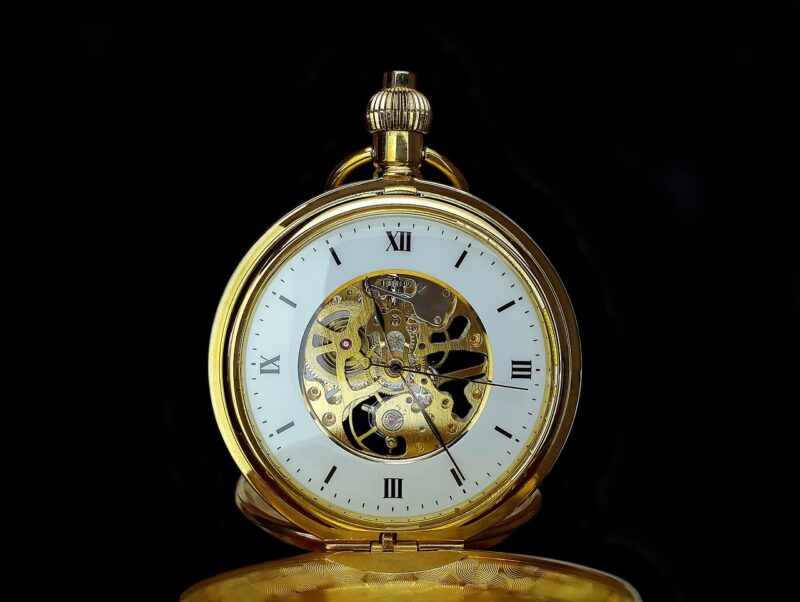The History of Clocks and How Timekeeping Changed Human Society
November 17, 2024

Time is an integral part of human existence, governing our days with a precision that has evolved over the centuries. The history of clocks and timekeeping systems offers a fascinating glimpse into the evolution of technology, culture, and society itself. In this article, we delve into the intricate journey of timekeeping, from ancient sundials to modern atomic clocks, revealing how our understanding of time has fundamentally shaped human civilization.
1. The Early Days of Timekeeping
Timekeeping began over 5,000 years ago, with early civilizations relying on natural cycles, such as the position of the sun and moon, to track time. Sundials and water clocks were among the earliest devices used to measure intervals.
Sundials
Sundials, which date back to at least 1500 BC in Egypt, used the sun’s shadow to indicate time. The design was simple: as the sun moved across the sky, the shadow cast by a stick (gnomon) on a flat surface showed the time of day. Though effective, sundials were limited by daylight and weather conditions.
Water Clocks
Water clocks, or clepsydras, were developed by ancient Egyptians and Greeks. These devices measured time by the flow of water from one container to another. Unlike sundials, water clocks could be used at night or during cloudy days, providing greater accuracy. They were particularly important for timing events such as speeches or religious observances.
2. Mechanical Clocks: A Revolution in Timekeeping
The introduction of mechanical clocks in the Middle Ages marked a significant shift in the way time was measured. Emerging in Europe around the 13th century, these clocks used gears and weights to keep time, paving the way for more precise measurements.
The First Mechanical Clocks
The earliest mechanical clocks did not have faces or hands but instead sounded bells to signal the passing of hours. They were often housed in churches and monasteries, serving to regulate monastic life and public activities.
The Development of Clock Faces
By the late 14th century, clock makers began to introduce faces with hour and minute hands, allowing for easier and more precise time readings. This innovation reflected the growing importance of time management in a rapidly urbanizing society. Trade, commerce, and social engagement began to rely more on engineered time.
3. The Age of Exploration and Timekeeping
The Age of Exploration (15th to 17th centuries) brought not only geographic discovery but also advancements in navigation, heavily influenced by timekeeping. Sailors needed accurate time to determine their longitude at sea, giving rise to significant improvements in clock design.
The Marine Chronometer
In 1735, John Harrison invented the marine chronometer, a highly accurate timepiece that could withstand the rolling motion of ships. This breakthrough allowed sailors to calculate their longitudinal position, drastically reducing the dangers of sea travel and playing a crucial role in establishing global trade routes.
Time Zones and the Standardization of Time
As transportation and communication networks expanded during the 19th century, the need for standardized time became critical. The introduction of time zones, formalized by Sir Sandford Fleming in the 1870s, allowed for synchronized schedules in the rapidly expanding world of railroads and telegraphs.
4. The Industrial Revolution and the Rise of the Clock Industry
The Industrial Revolution in the late 18th and 19th centuries brought about significant changes in the clock industry. Mass production techniques emerged, enabling the creation of affordable clocks for the general public.
Factory Clocks
With workers now congregating in factories, large timepieces became essential to signal shifts and breaks. Companies invested in clock towers, often overseeing entire towns and marking the rhythm of daily life.
Pocket Watches and Personal Timekeeping
The popularity of pocket watches surged during this era, making personal timekeeping accessible to the masses. This shift not only personalized timekeeping but also influenced social structures, as people began to manage their lives more meticulously around time.
5. The Modern Era: Atomic Clocks and Precision Timekeeping
The 20th century brought unprecedented advancements in timekeeping with the development of atomic clocks. These devices utilize the vibrations of atoms to measure time with remarkable accuracy, leading to the definition of the second as the duration of 9,192,631,770 cycles of radiation from cesium-133 atoms.
Impact on Technology and Society
With atomic clocks, global positioning systems (GPS) and the synchronization of telecommunications networks became possible. The precision of atomic timekeeping also allows for advancements in scientific research, including quantum mechanics and theories of relativity.
Time in the Digital Age
Today, technology has transitioned timekeeping from classic mechanical clocks to digital displays. Smart devices in every pocket synchronize with atomic clocks, ensuring that time is universally accessible and accurate. As we become increasingly reliant on technology, the implications of timekeeping extend beyond mere measurement, influencing everything from social interactions to global economics.
Conclusion
The history of clocks and timekeeping is deep-rooted in the fabric of human development. From the earliest sundials to the relentless precision of atomic clocks, our ability to measure time has changed the way we live, work, and interact with the world. As society continues to evolve, so too will our understanding of time—a critical dimension of the human experience that influences everything from ancient civilizations to our increasingly digital future.
In a world where every second counts, the journey of timekeeping serves as a reminder of our quest for knowledge and our desire to forge connections across time and space.








